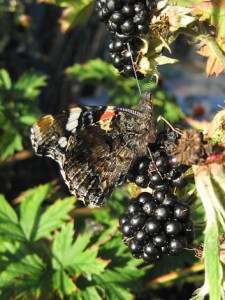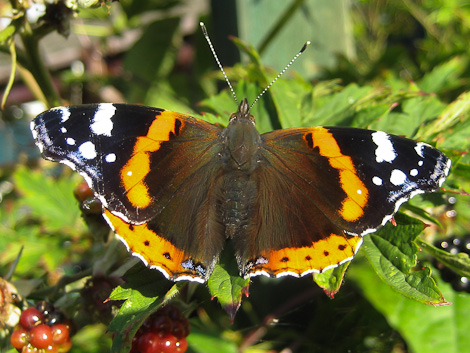 A couple of weeks ago I wrote about the fantastic Red Admiral that I am hoping will be around and about as soon as the weather warms up. However, the reason that I was prompted to write about the butterfly was due to an interesting article that I read in the wonderfully informative British Wildlife magazine.
A couple of weeks ago I wrote about the fantastic Red Admiral that I am hoping will be around and about as soon as the weather warms up. However, the reason that I was prompted to write about the butterfly was due to an interesting article that I read in the wonderfully informative British Wildlife magazine.
Whilst many nature lovers are aware of the satellite tagging that is now being done on all sorts of species, particularly the cuckoos and ospreys that have been tracked to Africa and back, you may not be aware that there are other ways to track the movement of species (particularly small, delicate ones such as butterflies).
Scientists have recently been investigating the levels of different isotopes of hydrogen found in the wings of Red Admirals across Europe. These are taken into the body of the butterfly when, as a caterpillar it does what caterpillars do and eats. Across Europe the normal foodstuff of a caterpillar will have different levels of these hydrogen isotopes. Comparison of these levels with non-migratory species of butterfly then allows scientists to tell where the butterfly spent its time as a caterpillar.
The results of the work were very interesting. Italian butterflies examined in autumn showed different isotope levels to non-migratory species. This indicated that the butterflies had developed in northern Europe and migrated south. Italian butterflies examined in the Spring had levels similar to those of local butterflies indicating that they were locally bred as a result of a winter breeding cycle and were not overwintering adults from further afield. In addition there were also some individuals that seemed to have migrated from further south in the Spring.
In Northern Europe the examination of butterflies in the Summer appears to suggest that they had migrated from central Europe, whilst those examined in the autumn appeared in the main to be more local, but with some migration still occurring from the south.
So, in conclusion it would appear that butterflies move north to breed in the Summer and then move south in the autumn to breed into the winter months. Will this change with the changing climate and, as previously noted, an increased propensity for adult Red Admirals to overwinter in some northern parts of Europe?
